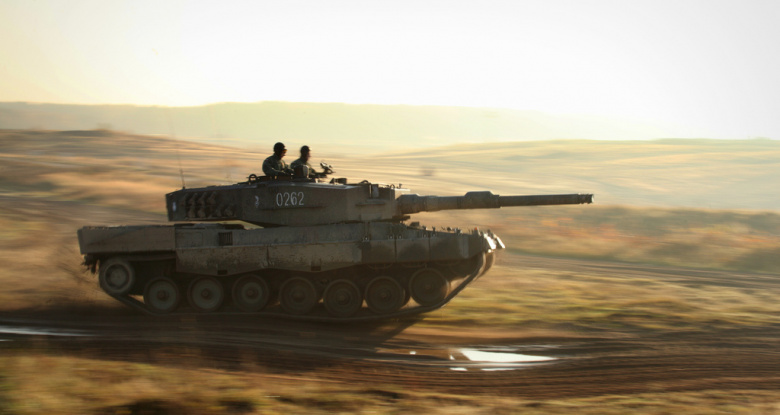The recent visit by Secretary of Defense James Mattis to NATO allies does not erase the fact that, as a presidential candidate and president-elect, Donald Trump stated on many occasions that NATO is obsolete. It is a bigger problem than just burden sharing. Trump’s key message is that the world has changed to the detriment of the United States, and that NATO no longer fits comfortably into this new world order. Of course, the United States will not withdraw from the organization, but NATO will get less attention from the Oval Office in the coming years. That is for sure.
For those in Europe who care about the alliance, this is a nightmare. But instead of clinging to the past, they should wake up. The world today is indeed fundamentally different from the one we happen to know, and certainly from the times into which NATO was born. It is indeed bizarre that NATO is still alive. Defense alliances are, by definition, temporary. Realists do not believe in long-term structural cooperation between states, and certainly not in the field of security. At most, states can try to cooperate in an alliance on a short-term basis to defeat a common enemy, like during the two world wars and during the Cold War. Once the enemy is gone, alliances have no meaning anymore. It was on this basis that John Mearsheimer and many others predicted the end of the alliance after the end of the Cold War. The implosion of the Warsaw Pact and the USSR itself should, indeed, have led to the demise of NATO.
It did not. The least bad explanation is organizational inertia. NATO tried to adapt to the changed circumstances by finding new enemies: proliferation of weapons of mass destruction, “rogue states,” failed states, ethnic conflicts (as in the Balkans) and, later on, terrorism. It is not difficult to come up with real or imagined dangers. But states do not need to be part of a militarily integrated organization to protect oneself against these kind of minor threats. Collective defense organizations, based on the premise of “an attack on one is an attack on all,” are established to defend oneself against an attack by a major power: Germany in 1914, Germany and Japan in the first half of the 1940s, the USSR during the Cold War, and maybe China in the future. Not for peacekeeping.
Collective defense organizations are not the best match for threats like terrorism and ethnic conflicts. For countering terrorism, coalitions of the willing will do. For managing ethnic conflicts, collective security organizations (like the UN and the Organization for Security and Cooperation in Europe) should take the lead, both for peacemaking and peacekeeping. Collective security organizations regulate the use of force amongst its member states, and they are—in contrast to collective defense organizations—not meant to serve against an external enemy. Because NATO stepped in for these collective security tasks, organizations like the UN and the OSCE got sidetracked.
NATO’s post–Cold War track record is dismal, which is not surprising, given the nature of the beast. Apart from the Balkans, which are more or less stable (although tensions are flaring up again these days), the NATO military interventions in Afghanistan and Libya are a complete failure. Thirteen and six years after NATO’s intervention, respectively, these states have hardly stabilized. On the contrary, Afghanistan and Libya are breeding places for terrorists. Again, this should not come as a surprise, because collective defense organizations are not meant for carrying out peace-building operations.
The biggest mistake, however, was NATO expansion. It is hard to refute the thesis that the Ukraine crisis is the result of interference by NATO and the EU in Russia’s spheres of influence. A red line was crossed, in the eyes of Moscow, and Russia had repeatedly made that position clear in advance. NATO expansion also contradicted Western promises. On the basis of these oral guarantees, in February 1990, Mikhail Gorbachev gave the green light for German reunification talks. And what did the West do? Expand NATO. Not just once, but twice. At the NATO Summit in Bucharest in 2008, President Bush even pushed through (against the wishes of the Europeans) a third extension, namely the promise to include Georgia and Ukraine into NATO. What did he expect Russia would do? Just take notice and agree?
More fundamentally, the West made the mistake after the end of the Cold War not to include Russia into the Euro-Atlantic security architecture on an equal basis. Contrary to positive examples in 1815 and 1945, the loser of the Cold War was left alone. Instead of replacing NATO with a regional collective security organization, the West kept NATO artificially in existence—and Russia in the dark. Ironically, the Baltic states, which wanted to feel more secure by becoming NATO members, are now feeling less secure. All this was predicted in the 1990s by foreign-policy giants like George Kennan and Paul Nitze.
Currently, there is a major split among the twenty-eight NATO member states: those in the south worry about migration and ISIS, but are relaxed with respect to Russia; those in the east are relaxed about ISIS, but worry about Russia. There is no common threat assessment. In addition, tensions between member states (Turkey and Greece) and within member states (Poland and Hungary) are rising.
Tom Sauer
http://nationalinterest.org




